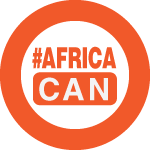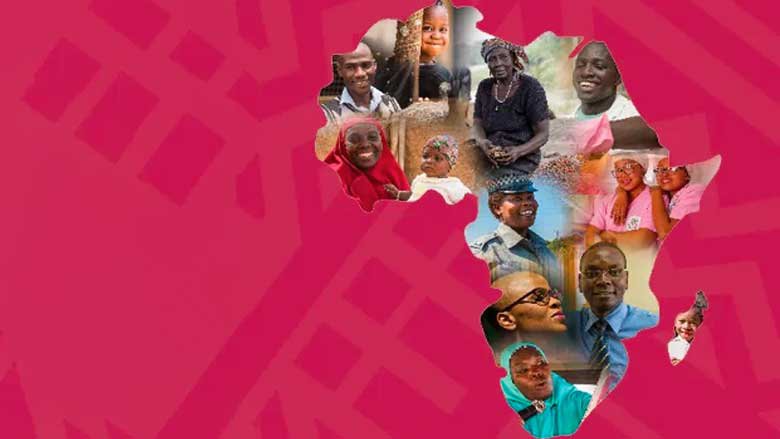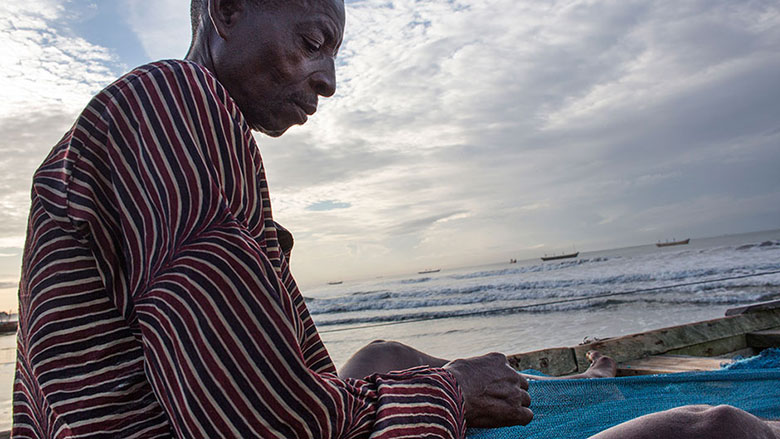The World Bank Group’s (WBG) engagement in Namibia is led by a joint Resident Representative who unifies country-level leadership across the institution. This enhances the WBG’s ability to address global challenges, and drive development in an integrated, holistic manner with speed, efficiency, and impact.
Namibia is a geographically large country with a small population of about 3 million (2024) and a 1,500 km-long coastline on the South Atlantic. The country is rich in mineral resources, including diamonds and uranium, sharing borders with Angola, Botswana, South Africa, and Zambia.
Resource wealth, strong governance and institutions, and sound macroeconomic management have helped poverty reduction and allowed Namibia to become an upper-middle-income country. However, socioeconomic inequalities—the legacy of apartheid systems of government in the past—remain extremely high and were worsened by the COVID-19 pandemic. Structural constraints to growth are also hampering productivity gains and job creation. The debt-to-GDP ratio remains elevated, at about 70% of GDP, reflecting a period of low growth, expenditure pressures, and rising debt servicing costs.
Namibia is one of the driest countries in Sub-Saharan Africa, with highly unpredictable precipitation patterns. The country’s poverty and reliance on rain-fed agricultural and livestock increases the country’s vulnerability to climate change and limits the capacity of poor households and communities to manage climate risk, increasing their vulnerability to climate-related shocks.
Economic Outlook
Namibia’s recent economic performance was stronger than expected. The economy grew by 4.2% in 2023, driven by the mining sector, including investments in oil exploration. The economy has recovered to its pre-pandemic level, but many key sectors, including job-rich construction and financial services, continue to lag.
Namibia’s economic growth is projected to moderate to about 3.1%in 2024 before accelerating to 3.8% in 2025-26. Growth in the non-mineral economy is expected to gain traction, especially in sectors that have been severely set back by the pandemic, including tourism. Household consumption growth is expected to rebound from weak levels in 2023, benefitting from monetary policy easing and lower inflation, which is projected to slow down to 4.6% in 2024.
In the context of an uneven recovery and severe drought, which has affected the wellbeing of subsistence farmers, poverty is expected to remain high at 17.2% in 2024 based on the $2.15 per day (IPL; 2017 PPP).
Investments in the extractive industries have shaped Namibia’s recent growth trajectory and the balance of payments.
Global and regional developments are important drivers of Namibia’s economic performance, as well as of fiscal and external positions, as the country is highly reliant on commodity exports and Southern African Customs Union (SACU) transfers.
Development Challenges
Since its independence in 1990, Namibia had made progress in reducing poverty, halving the proportion of Namibians living below the national poverty line to 28.7% in 2009-10 and to 17.4% by 2015-16.
Despite this, deep underlying challenges persist, undermining prospects for further advancement. Pre-1990, the Black majority were systematically excluded from fully participating in economic activities. This continues to shape society and the economy, constraining the country’s economic and social progress. Economic advantage remains in the hands of a relatively small segment of the population, and significant inequality continues. This lack of inclusiveness and Namibian society’s vast disparities have led to a dual economy—a highly developed modern sector, co-existing with an informal subsistence-oriented one—and are manifested in three main socio-economic challenges that define the economy:
- Namibia ranks as one of the world’s most unequal countries. Its Gini coefficient of 59.1 in 2015 was second only to South Africa. Geographical disparities in both economic opportunities and access to services are large and widening. High levels of inequality result in starkly different poverty rates across different groups, including by age and gender.
- Relatively high poverty, lagging human capital, and poor access to basic services are interrelated problems. Namibia’s poverty rapidly declined from 1993/94 to 2015/16, but it remains high for the country’s level of development. Despite recent progress, Namibia ranked 117th among 157 countries on the Human Capital Index.
- The duality of the labor market, combined with slow job creation and low primary-sector productivity, results in very high unemployment.
Last Updated: Oct 03, 2024







